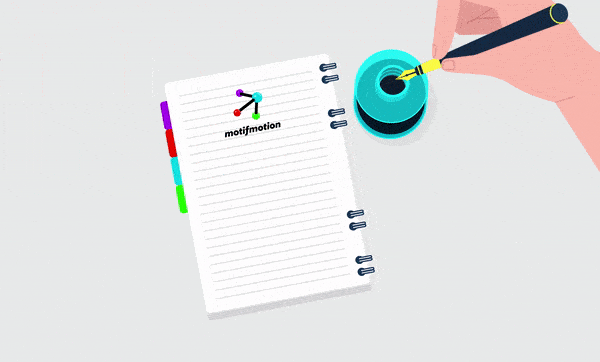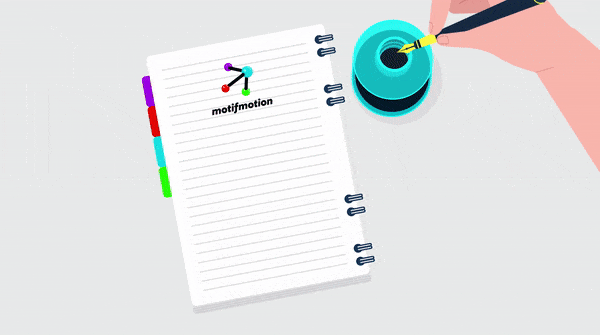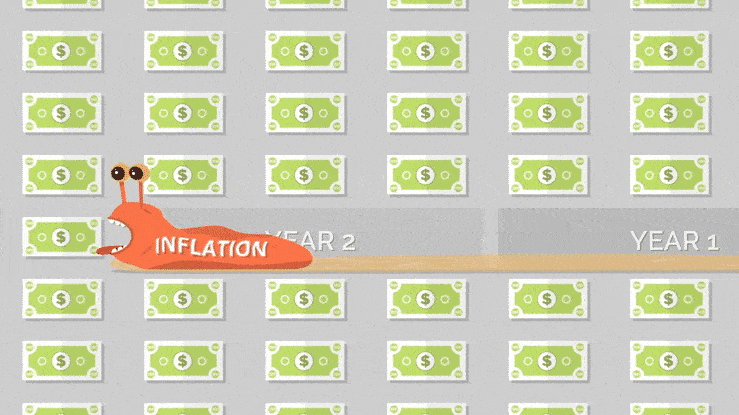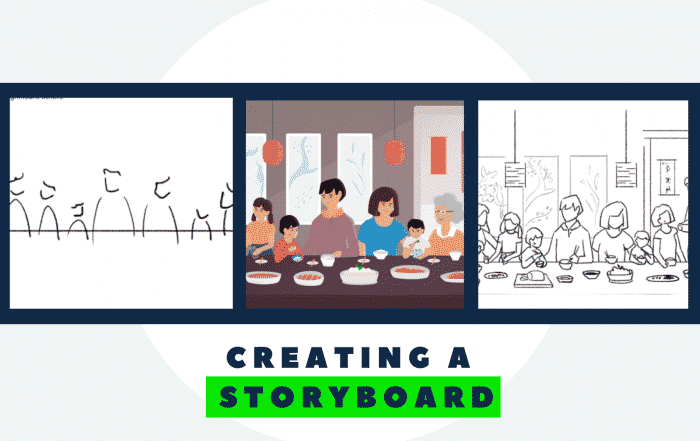“A good writer possesses not only his own spirit but also the spirit of his friends.”
― Friedrich Nietzsche
So you Googled something like “how to write a video script,” and here’s where you landed. Nice! Grab a cup of coffee — there is plenty to learn about video script writing.
Maybe you’ve got an in house production team. They are ready to film or animate. All you need to do is deliver a completed script for video. Or maybe you’re working with an external studio, and they’ve informed you that they can lower your quote if you deliver a completed video script. Or maybe, just maybe, you’re flying solo…creating your very own video or animation.
Whatever your situation, this blog post is for you!
In this guide, we’ll reveal key questions you should be thinking about, a formula for script writing for video, tips on style, length, flow, and more.
We’re consistently rated one of the top video marketing studios, so you can trust that we know what we’re talking about!
You can read straight through; or if you’re looking for something specific, go ahead and use the table of contents below to toggle around.
Did we mention? This is the second article in a 4 part series, in which we’re teaching you how to create an animation with limited resources.
Table of Contents:
Let’s start by with a game of apples and oranges. How are video scripts similar (and different) from other forms of writing you might be more familiar with?
How are video scripts like traditional writing?
If you’ve written in other contexts — i.e. a report for work, an article for a newspaper, or a blog post — you should already have some of the basics down. That’s a better start than you might think! Here’s a bit about how video script writing is similar to other forms of writing.
Simplicity is key
Writing in flowery detail or impressive jargon might have gotten you an A on your senior thesis paper, but it’s not how clear communication works in the real world. Video script writing, like most writing, is usually best kept clear and conversational — with an unflinching sense of empathy for the viewer.
In short: Keep. It. Simple.
Creativity within a Framework
Remember writing those essays in high school? Before diving into the piece, your teacher probably made you write an outline, including:
– An introduction with a thesis statement, and a list of three points.
– A body with three paragraphs, each supporting a point in the introduction
– A conclusion that summarizes the points, and restates the thesis.
Writing a video script isn’t quite that structured, but there are definitely guidelines you can use to help viewers follow the plot. We’ll reveal a solid script writing formula later in this article. In the meantime, understand this: video script writing (4) is all about creativity within a framework.
Tone Matters
“Tone is what the dog hears.” – Adair Lara
Tone — or the way writers use words to convey attitudes and emotions— matters in all writing, and video script writing is certainly no exception. Most video scripts are a combination of several tones, which come together to form an overall tone. It always depends on the video’s goal, as well as the audience digesting the material. Much more on this later!
Editing is your friend
Tone — or the way writers use words to convey attitudes and emotions— matters in all writing, and video script writing (5) is certainly no exception. Most video scripts are a combination of several tones, which come together to form an overall tone. It always depends on the video’s goal, as well as the audience digesting the material. Much more on this later!
Editing is your friend Like any other form of writing, great editing can make your script for video (2) much better. When editing, your job is to take as objective a stance as possible about what you’ve written — including its structure, organization and content.
Of course, the closer you are to your work, the harder it is to be objective! In times like these, you may want to leave your writing for a day or two and reset your brain. Or heck, recruit an extra pair of eyeballs to help.
How to Write a Video Script, Pro Tip # 1:
Get Inspired!
If you’ve made it this far, awesome! You’re on the right track. Before you know it, you’ll be writing a video script (2). But you know what step you should (definitely) take before you put pen to paper? View some examples of professional video scripts first. These can be found all over the web. Try searching “explainer animations” on Vimeo.com.
Or better yet, check out some examples in the Motifmotion portfolio.
How are Video Scripts UNLIKE Traditional Writing?
The Storyboard Connection
The first difference between video script writing and other forms of writing won’t come as a big surprise.
But it’s a doozy.
Unlike your college research paper or letter to the editor, a video script exists alongside a storyboard (and eventually a video — but let’s not get ahead of ourselves). The video storyboard is designed to describe what’s visually occurring on screen.
So while the script is always the foundational element that the rest of the video is built upon, while you write, you might begin to ask yourself:
“Will the production team be able to create on-screen action that jives with this script?”
This can be a challenging question to answer if you aren’t a videographer or an animator. That’s why you should head the following advice:
Avoid the temptation to visualize too much, too soon.
As a rule of thumb, the story should always come first. Sacrificing the video script’s flow so that you can cram a visual concept in (before the entire storyboard is envisioned) is usually not worth it. Better to write a killer script first, then develop a storyboard, then go back and revise the script, ad needed.
One Piece of the Puzzle
In the “how are video scripts LIKE traditional writing” section, I mentioned that scriptwriting is all about creativity within a framework.
There’s a key reason for that.
Because although the video script is the foundation of the video, in the end, it’s only one important part of it.
Video scripts aren’t endlessly abstract, like a Jackson Pollock painting. But they also aren’t formulaic; like instructions for an IKEA desk. Video scripts are more like writing a lyrically driven song.
Much like the lyrics of this song, video scripts must mesh with complimentary sounds, emotions, and conceptual ideas. As with the song, these components are interdependent. Take away the music backtrack of your video, and you’ll probably lose significant emotional pull. Take away the professional visuals, and you’ll have an amateurish piece. Take away the professional voiceover artist…and, well, you get the point.
Just like a song with corny lyrics, an underwhelming script for video (3) will result in an underwhelming video. The good news is that if the script is awesome, and the other pieces are equally professional, the pieces will come as a unified whole.
And that, my friends, is how great videos are made!
The Voiceover Artist
In a video script, not only will you want to think about the style you are writing (ex: friendly/light, professional/authoritative, bubbly/engaging, etc.), you’ll also want to think about the literal tone of your voiceover artist’s…voice! Here’s a great resource for understanding what kinds of voices tend to communicate corresponding emotional tones.
An Emphasis on Figurative Language
“The human mind is a pattern matcher.” – Jonathan Height
Using figurative language to convey a point is a tool used in LOTS of creative writing. From that standpoint, you might argue that conversation about this doesn’t belong in the “unlike” section.
But here’s the thing…
Because video scripts are typically very short, the importance of creating “comprehension shortcuts” is extremely useful in this type of writing.
Our brain’s evolved to think in metaphors. Well before the earliest forms of written language, legends and myths were passed down from one generation to the next — since time immemorial. The stories we told relied on motifs, allegories and symbols.
There’s a neurological reason for this.
The world is complex and our brains are wired to create comprehension shortcuts. We crave understanding and meaning, and there’s no better way to get it than by shrink wrapping complicated phenomena into stories that are easy to digest — to convey lessons that resonate with us.
In other words, when it comes to communicating nuanced ideas, the easiest way to get from point A to point B is through storytelling! What’s more, when a great script is combined with great visuals, a picture is painted before a viewer’s very eyes, taking them on a journey.
Getting Ready to Write
We’re getting close!
Before you begin writing, take time to jot down all the ideas you want to communicate in the piece. Put them down on paper separately. Only after you’ve established them, should you start thinking about the best way to connect them within your script (and the larger story).
Understand Your Goal
Before you put pen to paper, you’ve got to develop a clear picture of your end goal. What is the reason you are making this video? Who are you trying to reach? What goal are you hoping they’ll complete? What would you like them to feel?
If I asked you in a year from now, “was your video successful?” — what factor(s) will determine the answer?
If you don’t have a clear vision, you won’t write an effective script for video (4)!
Understand Your Topic
Make sure you have a robust understanding of the topic before you start writing. You’ll want to understand how the individual pieces exist independently, and ultimately, how they connect to one another. This will help you form a narrative that hangs together.
Understand Your Target Audience
Before writing, make sure you have a basic understanding of your target audience, and what they stand to benefit from your video. How technical is your audience? How new is your audience to the concepts, ideas, or stories you are presenting? What do they stand to benefit? Understanding your target audience is all about research and empathy.
How to Write a Video Script — ProTip # 2
Create a Buyer Persona
If you’ve never thought seriously about how to speak to (rather than at) your target audience, consider spending some time researching your “buyer persona.” Most marketers are familiar with the term. A buyer persona is a “semi fictional representation of your ideal customer based on market research and real data about your existing customers.”
Naturally, your buyer persona isn’t an accurate representation of your entire target audience! But you’ll never create a video script that resonates if you don’t develop a loosely accurate archetype of the people you are hoping to impact.
Define Your Key Message(s)
Sometimes, the goal of a video is to get across a single big message. In these cases, everything builds towards communicating it. Other times, your aim may be to explain something complicated connected by smaller, related parts. Or it might be to convey several ideas at once.
Defining the key message(s) early will help you stay connected to the video’s goal, and it will help you transition between concepts.
One way to do this is by developing a strategic brief. Creating a brief like this will allow you to map out your goals, what impact you’re trying to have, and ideas for getting there.
Putting Pen to Paper
Develop an outline
Creating an outline — even if only loose — is a smart (borderline essential) step. Your outline should consist of an introduction to your subject, a body, and wrap up/call to action. The specifics around how you approach your outline will depend on the type of video you’re creating. A few templates are provided later in this piece. Keep reading!
Decide the video length
As a general rule, the shorter and more concise, the better. Consider the world we live in today. It’s the so-called attention economy, and advertisers and marketers are constantly competing for our eyeballs and ears.
In short, if you want people to listen to your message, you’ve got to give them a compelling reason to stick around.
Sometimes, the hard part is already done for you.
For example, if you’re writing a script for a video meant to convey the details of an insurance policy, chances are, you’re creating content for a captive audience who already needs to learn the information. In this case, you’ll definitely want to be clear and engaging, but at least your viewers are already incentivized to listen and learn.
The length of the script will depend on the video’s goals. If you want to peak a viewer’s interest in order to engage in an action — shorter. If you want to educate the viewer about something in depth — longer.
Other times, you’ve got to get more creative! If the purpose of your video script copywriting (1) is to create excitement around a new product on social media, you’re going to have to create something short, and highly engaging — something that really knocks your viewers’ socks off!
When we can, Motifmotion tries to keep our videos between 1 and 2 minutes long. Sometimes we find a way to make them even shorter than that. Because even though video is the most impactful content in the world, engagement tends to drop off after 45 seconds or so.
The beauty of video production is that sometimes the visuals can “show” rather than the script having to “tell.” More on that later. For now, just remember that you should keep your video as short as you reasonably can, while making sure you hit on your key points.
Consider using a script timer tool (1) to help gauge how long your script will take to read aloud. Most script timer tool (2) options can give you an estimate based on average speaking pace, helping you stay within your target video length.
Establish the tone (and paint a picture)
When you feel passionate about a topic, it’s tempting to assume others will feel the same. Bad news, friends — it’s usually safe to assume that they don’t. So what’s the solution?
Hold your audience’s hand, and guide their emotional state.
Take them through a journey, assisting them in feeling what you feel. Importantly, it’s never about telling your audience what to feel. It’s about conveying emotion by painting a picture.
For example, if your goal is to create excitement and engagement, your script should be punchy, upbeat, and fun. You should seek to grab their attention right away. Perhaps with a burning question, or a compelling statistic. Something that gets them curious.
Are you dealing with a more serious topic?
Your video script still needs to earn viewer interest. In this case, it’s might be by highlighting the importance of a subject, and explaining the urgent need to deal with it. Think, for example, about a video about global warming, or requesting funds for a political campaign. Besides highlighting the crucial importance of the subject, it’s also essential to write with a tone of trust and authority.
By the end of the video, there will be other ways to do this too. The visuals, the sound FX, and the music.
All of these are key, but none as important as the script!
Transition and flow
Pop Quiz: What do almost all choppy, disjointed videos have in common?
Answer: Choppy, disjointed video scripts.
Whereas a book can be written with distinct chapters separating sub-storylines, videos usually need to flow effortlessly between plots and concepts (Quentin Tarentino’s “Hateful 8” notwithstanding). The good news is, in writing, there are many ways to transition between concepts. For example, a “head to tail transition involve placing “a word or concept in the first sentence of each paragraph that refers back to, repeats, reflects, or echoes a word or concept used in the last sentence of the preceding paragraph.”
No doubt about it, great video storytelling requires a clean, flowing video script — and there is no better way to lose your viewer than by failing to hold their hand through ideas.
Evolve with the storyboard
Remember, everything starts with the video script. For this reason, it’s very important that you don’t get ahead of yourself and deep dive into visuals before you’ve got the strong backbone of a video script.
That being said, once you’ve got your video script, (and you’re confident it’s at least 80% of the way there) you can move with confidence into the storyboarding phase.
The full storyboarding process is another subject altogether. If you haven’t been part of a storyboard process, know this: a storyboard is a visual summary (usually hand sketched) of how the on screen visuals will play out during the video. This can include everything from camera angles to, onscreen actors, to onscreen graphics and animations.
Your video script need not be a final product until you’ve formally moved into the production phase. And you can always go back and tweak things to better match the on-screen visuals after you’ve moved into storyboarding.
Edit your video script (ruthlessly!)
After you’ve completed a first draft, know this — it’s only a first draft!
Creating a perfect video script on the first try is a bit like the last time I stumbled upon a 22 carat golden elephant roaming the streets of Philadelphia. In short, it hasn’t happened — yet. (Never say never, I suppose).
Here’s what you should do while editing.
- Read your script out loud multiple times. Make sure it’s smooth, understandable and clear. Take out words, phrases, or turns of language you keep stumbling upon, mispronouncing, or are sticking out like a sore thumb.
- Ensure your tone aligns with your end goal and your target audience.
- Make sure the video script flows between concepts and sections.
- Ask other writers to read your script and provide feedback. Be open to suggestions and don’t be too proud of your work.
- Check your spelling, the language, and the meaning of words.
- Take breaks between edits, and re-visit it with fresh eyes. Keep re-reading out loud until it all sounds concise.
- Be extra ruthless! Your script will go through several rounds of re-vision, so be ready for it.
Finally, ask yourself the following:
- Is it written in a way that will resonate with my audience?
- Does it communicate the core message(s)?
- Does it tell an engaging story with a logical flow?
- Does it include a compelling Call-to-Action?
- Is it no longer or more complex than it needs to be?
- Is the script likely to achieve its objectives?
Script Writing Formats
The format you use will depend on the type of video you’re scriptwriting for. In reality, there are many ways you can approach a short video. But hey, you’ve got to start somewhere. Here are two of our favorite examples.
Explainer Video Format
Explainer videos are used to highlight a product, service, business idea, or even an organization’s mission — in a succinct and compelling way. Explainer vidoes are about communicating the most information, in the shortest amount of time, all the while keeping the audience engaged.
They typically follow a format like this:
Step 1: Highlight the Problem:
The first step is to draw attention to the problem that the product or service resolves. Even if your audience is already aware that there is a problem, it’s extremely important that you remind them of it, or further contextualize why it’s a persistent issue.
Step 2: Introduce the Solution:
Once your audience fully grasps the nature of the problem, it’s time to present the solution — you, duh! This is a short, necessary step, before you segway into step 3.
Step 3: Show how the product or service works
In this portion of your video script, your job is to explain the nature of your product or service, and how viewers can actually use it to solve their problem. Depending on your video’s end goal (and the nature of your product or service) you may spend a significant amount of time on this section, or you may want to offer a quick, punchy overview, and direct the viewer to the place where they can experience it in action.
Step 4: Call to Action
Ah…the all important call to action! If you fail to tell your viewer’s what to do next, what was the point of everything before it?
What is the specific action you want your viewer to take next? Do you want them to visit a website? Call a phone number? Download an app? Whatever it is, help them understand exactly what they need to do next.
So why are Explainer Videos Effective?
While it’s definitely possible to build emotion into an explainer video, the main reason they are effective is because they are crystal clear, and they apply the logical, decision making areas of our brains.
In other words, they offer concise, step-by-step logic, which is extremely easy to follow. Couple that logic with extremely compelling videos, and you’ve got yourself an excellent explainer video!
Video Storytelling Format
Sometimes, the purpose of a short video isn’t to market a product or service; but to tell a story. This is especially common in the case of mission driven organizations, such as nonprofits and NGO’s. Other times, the explainer video style is simply too rigid, and a more flexible video script is needed.
In situations like these, organizations can use common storytelling plots — or motifs — to inspire viewers and communicate messages.
These include motifs like “the hero’s journey” — in which a protagonist faces a series of challenges that must be overcome, before climbing to the top of a metaphorical mountain and accomplishing a goal.
When you place your message into a plot that people already identify with — even if subconsciously — you allow them to “put themselves into the shoes” of your characters, greatly enhancing the probability that your message will resonate with them on an emotional level.
So why are Storytelling Videos Effective?
Storytelling videos work well not because they are logical, but because they are emotional. Studies on memory formation show that memories “stick” much more effectively when they are based in an emotional experience.
The key thing to remember is that emotional states aren’t just some wishy washy idea. They occur in the context of neurochemicals. Like oxytocin (the love hormone), cortisol (the “stress” hormone), and dopamine the (“happiness” hormone). More on this in the next section!
The more emotion is attached to a compelling story that viewers can connect to, the more likely it will resonate with them on an emotional level, and the more likely the message will stick.
To explore how this works, let’s look at one of the most famous storytelling motifs – “The Hero’s Journey.”
The Hero’s Journey
When we hear a great story — particularly one based around a hero character that we can relate to — studies on brain activity tell us that we literally views ourselves as participants, rather than observers in a story. This creates an enhanced state of empathy for a hero character, and our brain releases oxytocin — the love hormone. More than just love, oxytocin is also involved in forging trust. Viewers experiencing higher levels of trust tend to be more engaged and understanding.
Then, throughout the hero’s journey, she faces obstacles she must find a way to overcome. It is stressful and difficult! These anxiety inducing subplots cause our brain to release cortisol.
In the end, our hero overcomes her obstacles and our brain releases dopamine – aka the happiness hormone.
Granted, this is a simplified view of the science. The important thing to know is that memories are much stickier, and experiences are much more meaningful when they are doused in emotion. A good video script writer understands this.
Alas, there is one more piece to the puzzle.
In the case of storytelling for a video, oftentimes, an unresolved problem remains. For example — let’s say your video aims to increase awareness about childhood illiteracy in a developing country. If the video simply ends without instruction, the viewer will be left thinking, “well, that’s all very sad. Wish there were something I could do about it.”
If you’ve done everything well up to this point, but you fail to “close the deal” with a call to action, the only thing you will have accomplished is allowing your viewer feel proud of themselves for feeling empathy.
Bravo to you. Hooray to the viewer.
Except…not really…because your viewer feeling proud isn’t helping the children who need to learn how to read!
The unresolved problem must open the door for action.
Tell the viewer how they can help. What tangible steps can they take to make the situation better?
How to Write a Video Script, Pro Tip # 3:
Combining approaches
Remember, video scripts are creative works! Consider the formats discussed above. Traditional explainer video formats can have storytelling components within them. Meanwhile, storytelling pieces can also contain formulaic elements. As ever, writing scripts for video (1) is a balance between structure and creativity.
Let’s check out an example of a hybrid approach.
A Script Format Template and Example
Our client, Invested.ch, is a Switzerland based startup company that encourages everyday U.S. and Swiss citizens to invest a portion of their savings, so that they can earn money on their money. Since their theoretical target audience is very broad — anyone who has savings they could be putting away, but who doesn’t understand the value of investing — the startup needed an animation that would explain why investing is so important in the first place.
So we (loosely) followed the formula outlined in the Explainer Video Format section above.
Remember, when it comes to script writing for video (2), there are no unflinching recipes. In this case, we combined a storytelling and explainer video approach, choosing to focus heavily on the problem itself.
Here’s how we did it.
Step 1: Understand the goal
After an initial discovery meeting with the client, we learned that their most important (early) task was simply to help potential clients understand that there was a problem in the first place.
The client knew they would eventually need to explain the nuts and bolts of their investment tools, but before that could happen they needed to help viewers understand that there was actually a problem. In other words, explaining the nature of the problem was more vital in this animation than usual.
Step 2: Understand the target audience
Technically speaking, the client’s audience is anyone with the means to invest. Meaning, anyone who has at least a few thousand dollars of savings that they don’t need to touch. From an early marketing standpoint, their audience was primarily in two countries — Switzerland (where the CEO resides) and the United States. For this reason, the script was eventually also translated into German.
Step 3: Define the key message
Invested.ch faced a difficult challenge. Selling a service-based solution, designed to solve a problem the majority of their target audience doesn’t even realize they have.
So what was their key message?
That the vast majority of Westerners don’t invest their money. In failing to do so, they lose money every year, thanks to the effects of inflation. Meanwhile, the wealthiest in society know all about the importance of investing — and they use it to multiply their wealth.
In theory, there is nothing preventing the middle class from investing with the same effect — except, of course, for a false narrative of complexity. While the behind the scenes action may be too complex for the average investor to understand, the basics are extremely simple and fairly easy to accomplish with the right tools.
Tools that invested.ch offers!
Choosing the Right Script Writing Format
After several meetings with the founder of invested.ch, we determined that this video should be a cross between an explainer video and a storytelling piece.
The storytelling piece would take place in the first half of the video, during the “highlighting the problem phase.” In it, we’d introduce the problem and explain why it matters. The rest of the video would proceed like a more traditional explainer video.
Check out the script below, and watch how we created the animation around it.
Introduce the Problem
Did you know, if you’re not investing your money, you are, in fact, losing your money? Thanks to inflation, you are losing an average of about 3 cents for every dollar, every year, or about 3 percent.
To be clear, we’re not talking about the loss of physical money, but how much your money is actually worth. Think of it this way, the quarter your grandfather was once able to buy a loaf of bread with, can now only buy you a slice.
Contextualize the Problem: Part 1
So while 3% in one year might not sound like much at first, it really adds up. If you put $10,000 of your hard earned money in the bank, you can expect to lose over $300 of value, year after year after year. So saving money in the bank is simply not analogous to “playing it safe.”
Now what about a person much richer than you? Inflation should affect the wealthy the same way…right? Well it would, except the mega rich are sidestepping the problem.
Contextualize the Problem: Part 2
While the majority of us are passively allowing our savings to be swallowed up by inflation, the top 10% of earners are actively investing in stocks, not only offsetting inflation but multiplying their wealth. This, along with a general lack of investing on the part of the middle class, has contributed greatly to the extreme levels of wealth inequality we see today. In other words, the rich are in fact getting richer, and the middle class, if they’re not investing, are getting poorer. And if you’re in the majority this is affecting your wallet, your opportunities, and your life experiences.
Introduce the Solution
To combat this, Invested.CH, a Switzerland based initiative, stepped back and asked a basic question. What if we created an intuitive tool that allows you to not only easily invest in stocks, but to invest wisely, and with whatever amount you can spare?
Invested.CH aims to make up for the guaranteed loss caused by inflation by empowering the middle class to make real investments, like the wealthy have been doing for decades.
Show How the Product or Service Works
Our cutting edge tools are designed to be simple and intuitive. To guide you through your first investments, the website also includes a series of step by step, easy-to-understand tutorial videos–like this one.
Within no time, you’ll be making well informed trades based on innovative financial models. In many respects, more cutting edge than those used by professional stock forecasters.
Call to Action
The tool is constantly being refined. Come be a part of the movement, by visiting us at Invested.ch and be among the first to test drive our latest investment tools. While you’re there, you can also follow our progress by signing up for our newsletter.
Conclusion: How to write a video script (The Ultimate Guide)
And that’s how to write a video script!
There is no doubt about — video script copywriting is an essential component of the video production process. It is a blueprint for what’s to come, and its importance should never be glossed over.
That being said, it’s just one part of the process! For a full overview of the video production (and animation) process, read part 1 of this series, How to Create an Animation on a Budget. And stay tuned for Part 3 – “How to Create a Storyboard,” as well as Part 4 – “Creating an Animation — from Concept to Delivery.”
Cheers!










